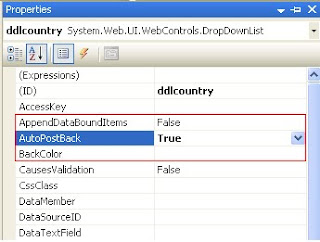What is Encapsulation (or information hiding)?
Encapsulation is wrapping of data into a single unit. It is the process of keeping state and behavior of the object in a single unit and exposing public methods to act upon the state means hiding internal data of the object from the outside world.
In OOP the encapsulation is mainly achieved by creating classes, the classes expose public methods and properties. The class is kind of a container or capsule or a cell, which encapsulate the set of methods, attribute and properties to provide its indented functionalities to other classes. In that sense, encapsulation also allows a class to change its internal implementation without hurting the overall functioning of the system. That idea of encapsulation is to hide how a class does it but to allow requesting what to do.
There are several other ways that an encapsulation can be used, as an example we can take the usage of an interface. The interface can be used to hide the information of an implemented class.
IStudent myStudent = new LocalStudent();
IStudent myStudent = new ForeignStudent();
According to the sample above (let’s assume that LocalStudent and ForeignStudent are implemented by the IStudent interface) we can see how LocalStudent and ForeignStudent are hiding their, localize implementing information through the IStudent interface.
What is Abstraction ?
Abstraction is the act of identifying the relevant qualities and behaviors an object should possess without representing background details.
The importance of abstraction is derived from its ability to hide irrelevant details and from the use of names to reference objects. Abstraction is essential in the construction of programs. It places the emphasis on what an object is or does rather than how it is represented or how it works. Thus, it is the primary means of managing complexity in large programs.
Encapsulation is wrapping of data into a single unit. It is the process of keeping state and behavior of the object in a single unit and exposing public methods to act upon the state means hiding internal data of the object from the outside world.
In OOP the encapsulation is mainly achieved by creating classes, the classes expose public methods and properties. The class is kind of a container or capsule or a cell, which encapsulate the set of methods, attribute and properties to provide its indented functionalities to other classes. In that sense, encapsulation also allows a class to change its internal implementation without hurting the overall functioning of the system. That idea of encapsulation is to hide how a class does it but to allow requesting what to do.
There are several other ways that an encapsulation can be used, as an example we can take the usage of an interface. The interface can be used to hide the information of an implemented class.
IStudent myStudent = new LocalStudent();
IStudent myStudent = new ForeignStudent();
According to the sample above (let’s assume that LocalStudent and ForeignStudent are implemented by the IStudent interface) we can see how LocalStudent and ForeignStudent are hiding their, localize implementing information through the IStudent interface.
What is Abstraction ?
Abstraction is the act of identifying the relevant qualities and behaviors an object should possess without representing background details.
The importance of abstraction is derived from its ability to hide irrelevant details and from the use of names to reference objects. Abstraction is essential in the construction of programs. It places the emphasis on what an object is or does rather than how it is represented or how it works. Thus, it is the primary means of managing complexity in large programs.
